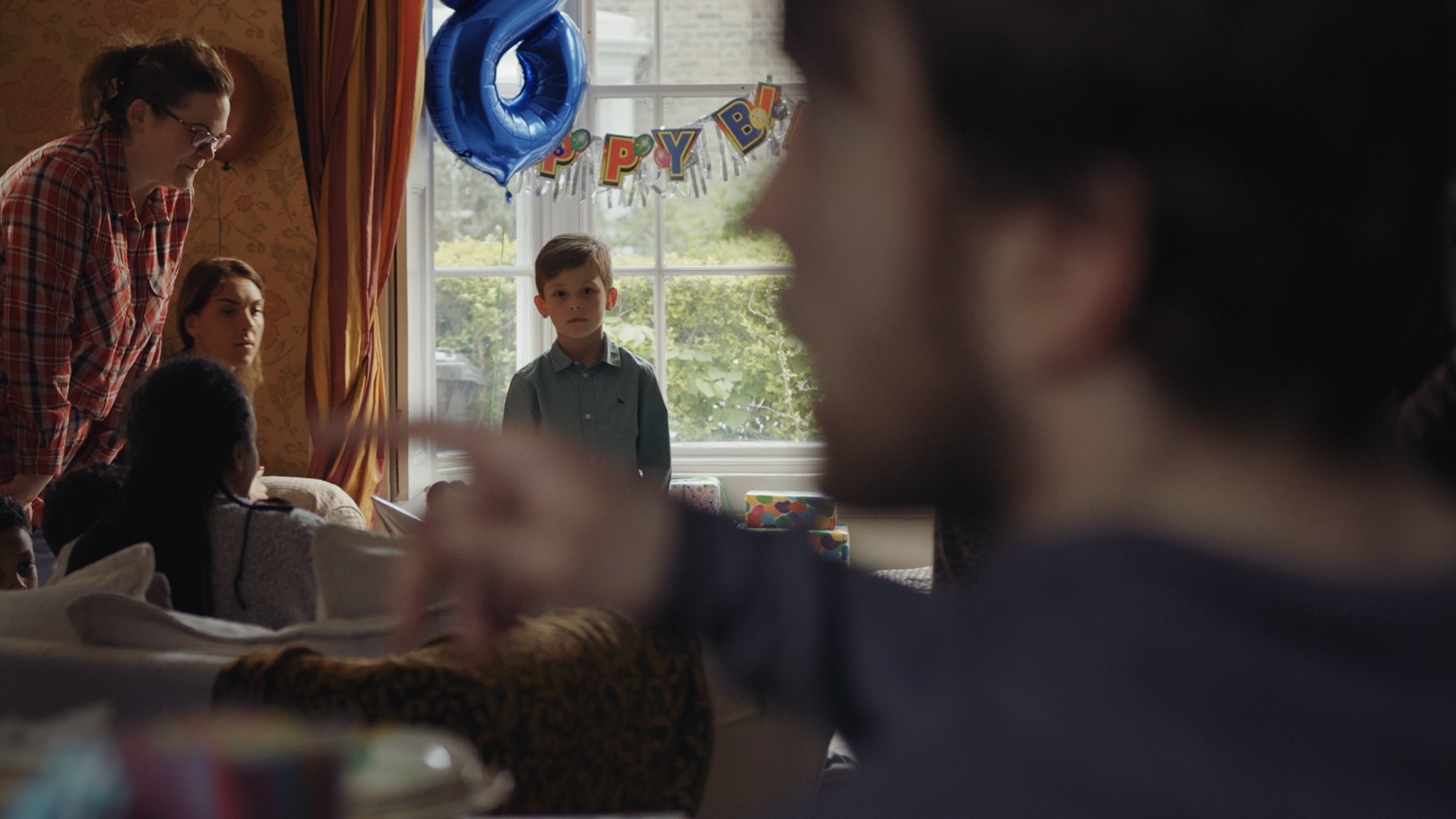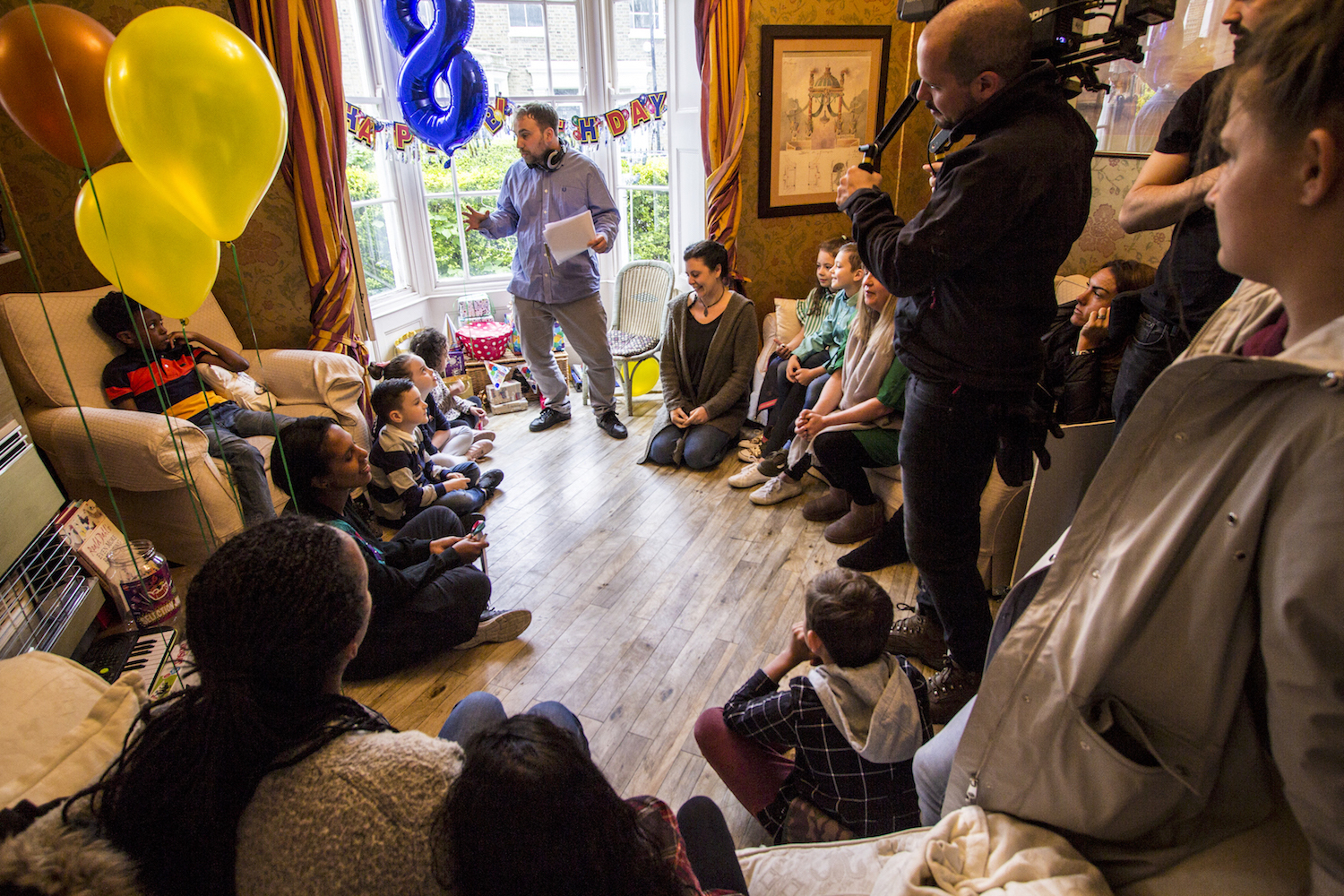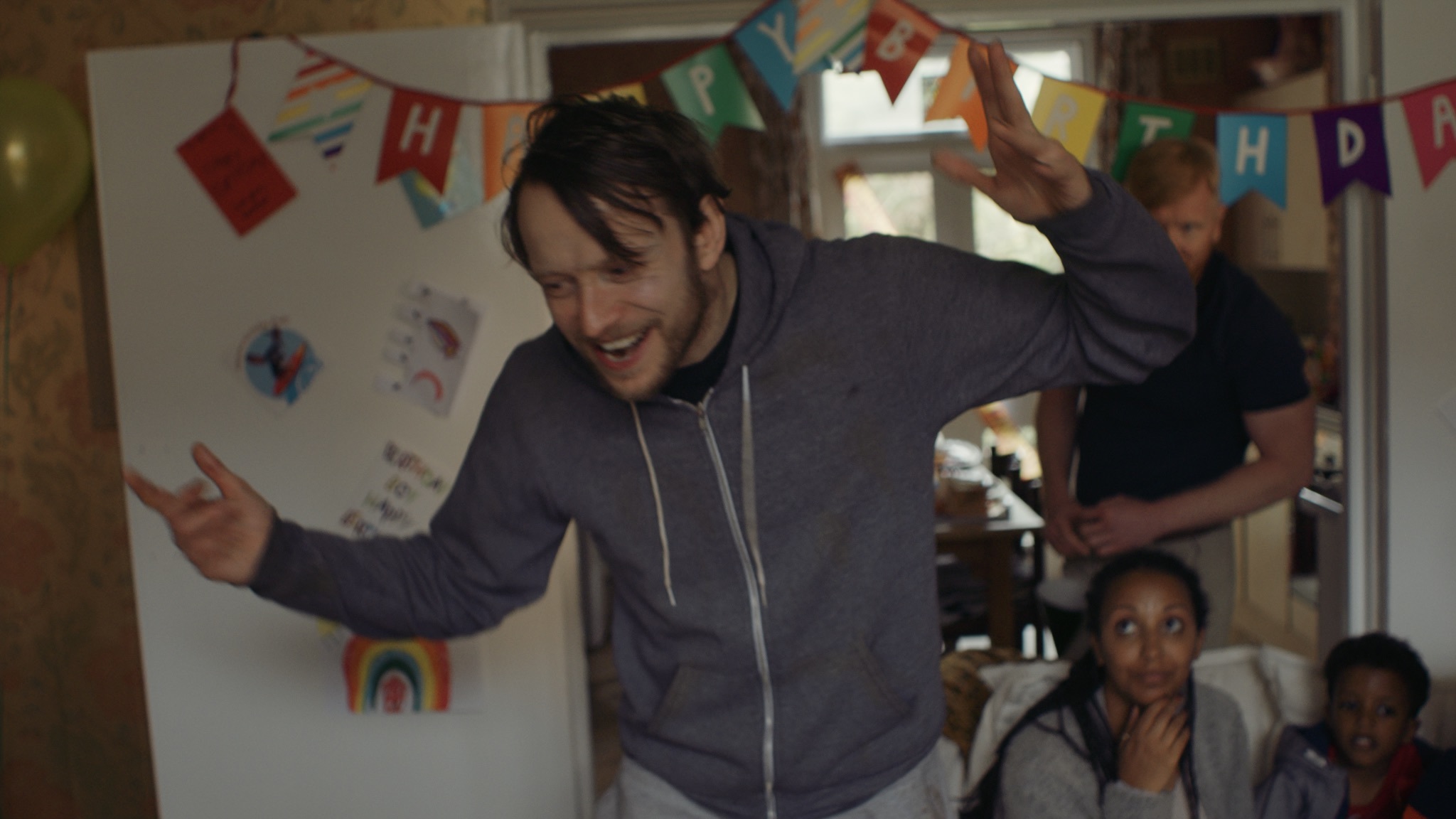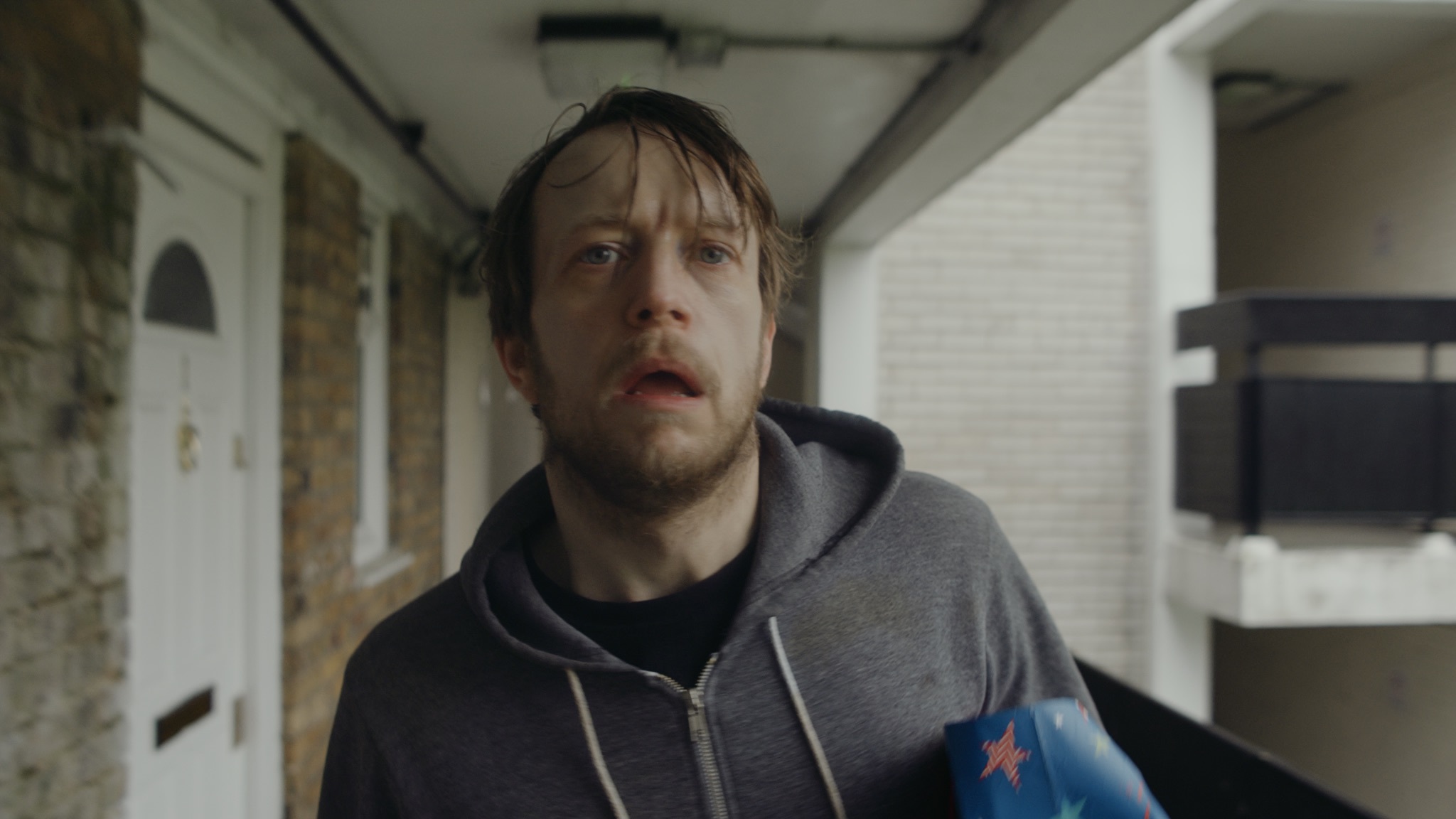
Case Study: Smack Edd
Greg Hall tells about his short Smack Edd.
Geplaatst op 25 juli 2019
Greg Hall has directed six independent feature films and one feature
documentary. His debut The Plague received the Katrin Cartlidge
Scholarship from Mike Leigh. He has over 14 years experience of
working in the industry and was most recently attached to the
Gary Kurtz Christopher Marlowe project.
"We didn’t view the short as being a proof of concept, partly because we had moved on from the feature script, but more as a stand alone film that would embody the ethos of our company Medium Kool and also to showcase the type of work we want to do as a director and actor."
A collaboration between actor and director
"The short film Smack Edd (2019) was born out of a natural collaboration between Actor/Writer George Russo and myself as a Director/Writer. Originally we both met and worked together in a Director - Actor relationship when I was hired on a low budget true-crime feature that George was cast in the lead for. The material wasn’t what inspired either of us creatively, we found ourselves working on the production due to similar life experiences as we were both financially surviving in our respective careers. Working in this capacity created a natural spark as we moved away from the original script, using lots of improvisation and making the most of the production and the directing and acting opportunity. From this, a creative bond begun with our friendship developing further as we discovered mutual tastes in music, film and art."
"Having worked together on someone else's production and with a growing friendship, it naturally developed into us discussing ideas and the opportunity of working together again, not just as a director - actor capacity but also collaborating as writers so the material was fully ours. This passion for creative control went one step further as we established our own production company Medium Kool to be a home for making our own work. Both of us have a background in low budget feature films, so the goal was to write and produce features together as opposed to shorts. I’ve directed six low-to-no budget features since my break out success The Plague (2004) which was made on just £3,500 and achieved amazing accolades such as London Film Festival official selection and the Katrin Cartlidge Foundation Scholarship from director Mike Leigh. Likewise as an actor George has worked on countless feature films and also co-wrote and starred in the lead of Turnout (2011), inspired by his own life and upbringing."
"With this background we began developing ideas and very quickly it became apparent that throughout his career George had always gravitated towards drug addict archetypes or as he jokingly referred to it as ‘Junkie George’. Both Neil Maskell’s Shit Kicker (2010) and Gerard Johnson’s Tony (2009) feature George portraying addicts. It’s a motif that underpins his own writing with Turnout as drug addiction has played a major role in his life. Many of his immediate family are themselves addicts, in fact his father was a long time heroin dealer and user. 2019 marks George’s tenth year of sobriety and during his recovery he has spent much of his spare time working with others who are dealing with addiction. We wanted to draw upon this wealth of first hand experience and began to pull together references. Major influences for us were William Burroughs novella Junkie, Lech Kowalski’s film Gringo aka Story of a Junkie’(1985) and the HBO documentary Junkie Junior (1987)."

From feature to short
"Originally we wrote four drafts of Smack Edd as a ninety minute feature film. It was an episodic tale of various characters across East London caught up in the heroin trade, from aged street junkies, teenage dealers, addicted prostitutes to corrupted police officers. While we were pleased with the outcome as a fast paced, strong characters and well written script showcasing our writing abilities, it felt more like a drug-exploitation film rather than dealing with the deeper journey of addiction and recovery. We got a lot of great feedback but struggled to secure finance, so we pushed on writing our second feature script Villain, a clear crime thriller genre piece which was bought by a production company and shot earlier this year set to be distributed in 2020. This gave a great boost to our writing confidence but the directing and acting sides of our characters were itching to produce something together under the Medium Kool banner."
"So the script for the short Smack Edd was carved from the ninety minute feature we had shelved. We decided to take one of our favourite moments from the story of when Edd gatecrashes his son’s eighth birthday party with a stolen computer console as a gift for the premise of the film. Therefore it was relatively easy to put together the seven page script, we made some tweaks to dialogue but we knew as the writers that we could have complete freedom as a director and lead actor to develop it further. We didn’t view the short as being a proof of concept, partly because we had moved on from the feature script, but more as a stand alone film that would embody the ethos of our company Medium Kool and also to showcase the type of work we want to do as a director and actor."

Pre-production and crew
"The production team was quickly assembled from reliable crew I had worked with before, the first assistant director Simon Haveland, production manager Lucy Jordan and sound person Jeet Thakrar all had worked on previous films of mine. Likewise the producer David Alamouti, editor Marco Granese and director of photography Nicholas Nazari and I had all worked together lecturing in Film Production at Solent University. I also brought in my sister Becky Finlay-Hall, a practising drama therapist as an acting coach for the rehearsal process, a role she has done on a number of my early low budget features. So I knew I had a strong team around me, which was also really important for the casting. Obviously the lead role was co-written with George Russo for him to play, so I had no concerns as I knew the depths he would go to on the character. The supporting roles had also been written with two actors we had worked with previously, Paul Marlon as Mark who I had collaborated with a lot before, and Lorraine Stanley for Fran who with some negotiation was able to to make herself available as she had just begun a big role on a huge television soap. The most difficult casting was the son Patrick but after a number of considerations the answer was closer to home, George’s godson Francis Pope Junior was the perfect choice as his parents had backgrounds in performance and we could build on their already established personal relationship."
"The budget of £5,000 for the film was raised by a handful of private investors who put in small amounts between £500 to £1000, I wanted to avoid both crowdfunding and public funding applications so I could just be free to focus on making the film I wanted. The key part to the production was the location, the film is pre-dominantly set in a family home for the children’s party. The action plays out in both the kitchen, where the adults speak, and the living room, where the children party takes place, so it was of utmost importance that we found a location where the two rooms would be connected and look through to each other. We also wanted the location to be based in East London for authenticity because this is where the story is set, It’s also the community we live amongst so with some local knowledge George found the perfect place in Hackney via a family friend. The final key component were the supporting artists, the parents and children that would fill our party. I was adamant that the children's party would feel authentic therefore I got parents and their children from my eight year old daughter's school and local family friends. The lead cast and entire supporting cast were working class and most had a tie to the local area, an attention to detail and authenticity that I was really pleased with."

Vision on cinematography
"I approached Smack Edd with the idea that I wanted to do something that would visually develop my craft as a director. For the previous two feature films I was a director-for-hire which offered great opportunities, learning on the job working with bigger crews and to distributors requirements, but they were not wholly satisfying experiences creatively. Due to the nature of low budget home entertainment productions with its rushed financing, you have very little prep, most of your time is taken up with working around problems. As a default you end up shooting a majority of the film in what’s called ‘coverage’. Basically a wide master shot covering all the action, then shot/reverse shot on the actors saying their lines, which will all cut together cohesively in the edit. But shooting in that fashion starts feeling like a conveyor belt after time, so I knew from the outset that I did not want to shoot coverage. Especially as it’s such a dialogue heavy script it would be easy to just frame the actors and record the lines. A huge influence on how I wanted to approach the film language was director Andrea Arnold whose oeuvre I have studied from her early shorts to her four features. I greatly admire the neo-realist cinematography she has created with D.O.P Robbie Ryan from the short Wasp (2003) to the feature American Honey (2016), where the camera almost becomes a character and the aesthetic engages the audience emotionally."
"Cinematographer Nicholas Nazari accepted the idea of avoiding shooting coverage and the influence of neo-realism and ran with it, creating the concept that in Smack Edd the camera would follow emotional beats of the story's subtext and focus the audience on where or who their sympathies should lie with. For example, when the protagonist Edd turns up at the front door we keep the camera purposely behind him outside of the house as he pleads with his ex and her new partner to let him in. Usually you would move the camera inside and shoot Edd’s coverage from that angle but on a subconscious level the audience would then be inside the house and have more power as it’s exactly where he wants to be. Instead we keep the camera/audience stuck outside with Edd so their sympathies are aligned with his goals. It was an experimental way of shooting the story. We broke the script into subtextual chapters and the entire film is told in twelve shots. Its handheld, long takes with purposeful lens flare are intended to give the film an intense, visceral, and very real feeling for the audience as it plays out practically in real time. We spent a lot of time together on the location working out the logistics. Nic drew floor plans and sketched out the camera movements. I used these to create a special shooting script that broke the film into its sequences and showed how they would be shot. It was this plan we would work from for the production."
"The colour palette was also a key consideration for telling the story. I had chosen the theme of Autumn because it symbolises change which would add to the story's subtext. Therefore the house party with its decor, balloons and character costumes is a palette of golden browns, mustard yellows, rusty oranges, deep greens, etc., whereas Edd is dressed only in grey, void of any colour and communicating story meaning on a subconscious level."

About the shoot
"The production was planned for one weekend: Saturday to rehearse with the actors and the crew to get kit and location prepared, Sunday to shoot the bulk of the film of the children's party, Monday to do the opening and closing shot with just the lead actor and then to return kit. My approach to rehearsals isn’t just to practice lines but to explore characters and relationships in more depth. The Saturday morning consisted of a number of movement exercises, hierarchy games and back story workshops for the three main cast facilitated by acting coach Becky Finlay-Hall. We then brought in Francis Pope playing Patrick to also work with everyone before we all headed to the location in the afternoon. Here we were able to block and run the entire film in the space with Cinematographer Nicholas Nazari and Camera Op Sebastian Lojo."
"The shoot ran incredibly smoothly considering the amount of elements we had to juggle but the extensive preparation had made both the crew and cast a strong team. The additional difficulty we faced with filming was the part of using real children and parents for the scene. While it created a truly authentic sense in the film, it was tough to remain focused on such a heaving set. As a parent myself I had experience of hosting children’s parties before, which can be very stressful in itself, and here I had combined a real party with trying to shoot a film with long co-ordinated camera shots and dramatic key performances. But all went well even though we executed complex set ups. We only shot what we needed and stuck to our shooting plan. While the film only has twelve shots it was still important to have the editor Marco Granese on set. He was managing the material and getting to grips with the footage straight away. The edit didn’t involve many cuts but each needed to be precisely considered so that the realistic style would be seamless and the edits completely unnoticed."

Soundscape and release strategy
"While the cut of the film locked relatively quickly, a majority of post-production was spent on the sound edit and mix which was done by the recordist Jeet Thakrar, an incredibly talented sound person in both production and post. We had worked together a number of times across a handful of low budget features and always enjoyed the creative collaborative process. I had made the decision that I did not want to use any music in the film, I felt it would detract from the haunting realism I was trying to evoke with the piece and could become overly sentimental or at worse melodramatic. A huge influence behind this decision were the films of British working class director Alan Clarke, who also influenced Andrea Arnold not to use film score, whose work evokes a strong sense of realism. Clarke’s influence goes even deeper as the font choice for the credits of Smack Edd are a homage to the credit font of Christine (1987), his film that also looked at heroin. The decision not to use music meant that the sound design was even more important. It gave us creative scope to create a soundscape that could at times be abstract and evoke emotion while still using the realistic audio of the settings."
"Once the film was mixed in 5.1 and stereo versions, the picture was graded and the DCP was helpfully created by the grader Alex Grigoras. With an online screener prepared and all the additional promotional elements put together it was time to carve a release strategy for the film. Previously a lot of my projects had been rushed into distribution or released online soon after completion, whereas with Smack Edd I was adamant that I wanted to take time and to screen in a cinematic setting, projected to a collective audience. I had some ideas for a festival release but met with Rebekah Louisa Smith, the 'Film Festival Doctor', for a consultancy session which was very helpful in locking down a strategy, time plan, and initial outline of key festivals to aim for. From this, a strategy was built up that focused on regional festivals across the United Kingdom that were either filmmaker-led and/or keen supporters of independent filmmaking, and likewise, international festivals predominantly in the US and Europe that championed new voices and visions within cinema, and finally film festivals that focused on addiction, mental health and recovery. My festival strategy was created from my goals for the film. I didn’t need the short to break into feature filmmaking but instead I want it to build an audience through the traditional route of screenings until I finally release the film online in early 2020."

In conclusion
"An interesting consequence of making the short film Smack Edd is that it inspired us to re-approach the feature film idea, discarding the drug-exploitation of the original feature script and instead going in a direction that looks at a character's descent into addiction, the hard times of living as an addict and then the change of nature and perspective in recovery. The new feature The Damage Done, that George and I are currently writing, shows the entire journey of addiction and recovery. It is also a deeper contemplation upon time and existence as the characters' three time lines are interwoven as a tapestry. The idea has developed much further because of making the short film. If we hadn’t done that, we wouldn’t be where we are now. We are aiming for The Damage Done to be the next Medium Kool production and the next feature directed by myself and staring George Russo. We are currently finishing up the script and at the early stages of putting together a package and the finances for the film. We are able to use the short as a strong example of our creative ethos."
"As a filmmaker I’ve always been highly motivated. Getting productions off the ground is no easy feat and there are a number of elements always to consider, from the creative (story), the practical (setting) to the financial (distribution). Often it feels like there are a number of obstacles in our way and filming requires great resilience and skills in problem solving, but no matter what stands in our way we must doggedly get our films made. We should never let money stand in the way of telling great stories. Independent filmmaking must always take us out of comfort zones as we should push to get films made against all odds. We can only develop, learn and hone our craft by making. Therefore I would encourage all would-be filmmakers thinking of making their films to just go out and do it. Learn from your mistakes and keep making more films."
